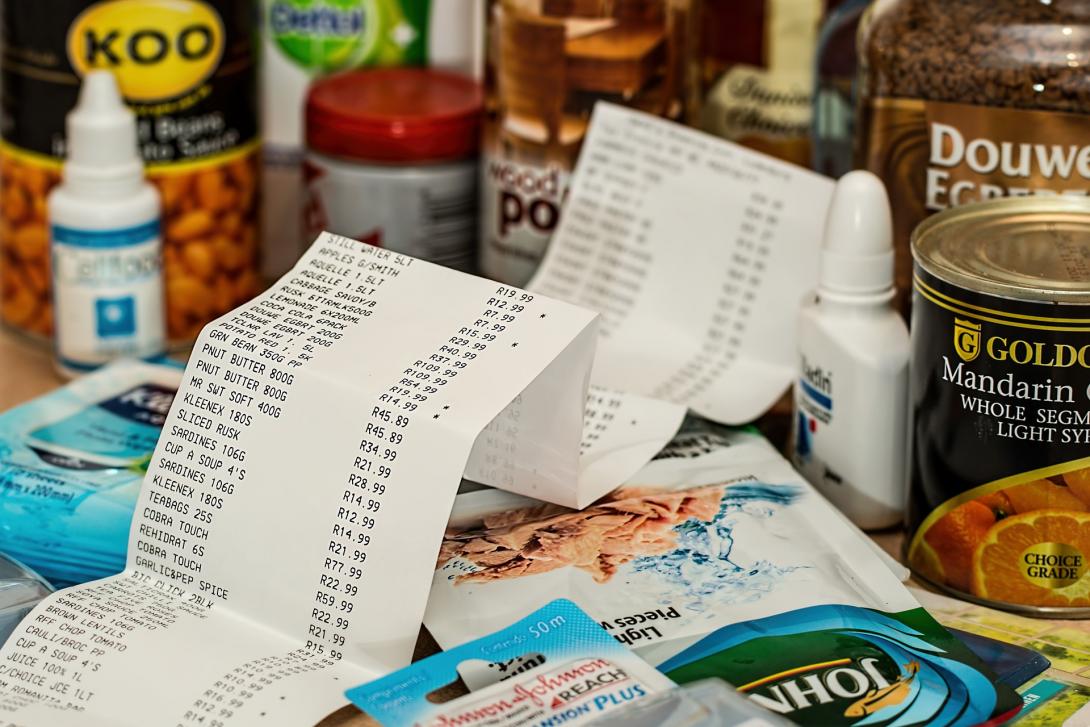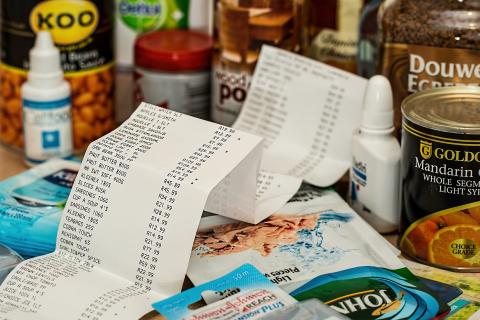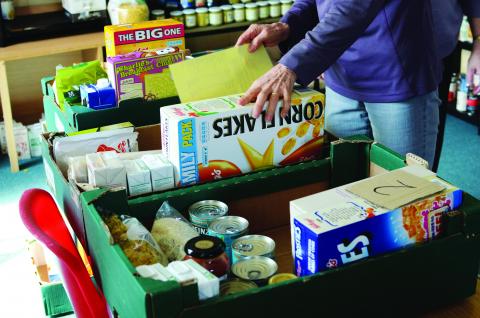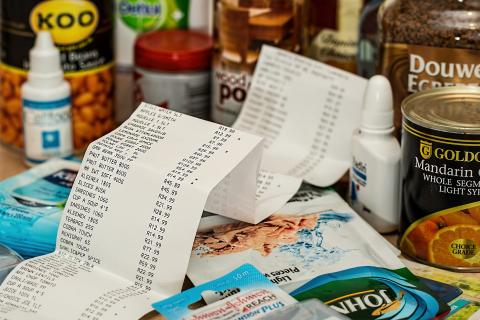13 April 2022
Food Prices Tracking: April Update

by Indu Gurung
Prices of fuel and food are soaring globally as Russia’s invasion of Ukraine continues. In this update we look at how food prices have changed in the past month, and the impact of price rises globally and in the UK.
Food prices have continued to rise sharply in the UK and Globally
Overall Inflation in the UK
The Consumer Price Index (CPI) rose by 7% in the 12 months to March 2022, up from 6.2% in February - a new 30 year high. On a monthly basis, CPI rose by 1.1% in March 2022, compared to a rise of 0.3% in March 20211 .
The sharp rise in March was higher than the rate forecasted by economists, as the Russian invasion of Ukraine has continued to push up fuel prices due to supply chain disruptions and globally imposed sanctions2. The Bank of England has predicted that inflation will reach 8% in April and could peak close to 10% later this year, the highest rate in four decades3.
UK Food Prices
The latest Consumer Price Index (CPI) data shows that take-home retail prices for commonly purchased food and drink items have risen by 5.9% in the 12 months to March 2022, up from 5.1% in the 12 months to February 2022. Prices have risen across all food categories, with the highest levels of inflation seen in oils and fat (18.2% higher than in March 2021) and milk, cheese and eggs (8.2% higher than in March 2021).
Within the oils and fat category, margarine and other vegetable fats have seen particularly steep inflation. These products are 34.7% more expensive in March 2022 compared to March 2021. This drastic rise in prices is driven by the Ukraine war– Russia and Ukraine exported 55% of the global supply of sunflower oil last year4, and the sudden need to look for alternatives has increased the demand for and costs of other vegetable oils5.
Within the milk, cheese and eggs category, low fat milk saw a particularly sharp rise of 14.2% and other milk products of 10% as farms struggle to break even with fertiliser, cattle feed and fuel prices rising6. Industry experts predict that prices will continue to rise7 .
CPI data shows that bread and cereal prices also rose by 5.2% in the last 12 months. Inflation is not as severe for this category as for oils because the UK produces around 85% of wheat domestically8 and is therefore less affected by disrupted supply from Ukraine.
Global Food Prices
The FAO’s Food Price Index rose to its third all-time highest level for global food prices for key commodities in March 2022, with a 12.6% increase from February 2022- the highest month on month increase since 1990. Vegetable oils, cereals and meats sub-indices saw a record high while sugar and dairy also rose significantly9.
The index shows that globally, cereal prices are up by 17% and vegetable oil by 23% compared to last month, as the war has disrupted Black Sea exports from those regions which produce about 30% of the world’s wheat exports and 55% sunflower oil exports10. Furthermore, rising commodity prices has intensified trading conditions which has complicated the flow of raw materials around the world11.
Global food prices were already rising prior to the invasion of Ukraine due to climate change causing poor harvests (in 2021 wheat prices were up by almost 40% due to poor harvests), and the pandemic disrupting supply chains12. But the recent conflict in Ukraine has resulted in previously unprecedented increases in the FAO Price Index.
Global Impact
The invasion of Ukraine will continue to exacerbate global food prices, as the FAO predicts prices to increase up further by 20%, putting those already vulnerable countries at increased risk of malnutrition13. The Arab nations and African countries who heavily depend on wheat imports from Ukraine are already suffering from food shortages14. Kenya has seen an 33% increase in the cost of importing wheat15, and prices of bread have risen by 70% in Lebanon16. Egypt had seen an increase of 80% in prices of wheat even before the Ukraine war, and is at risk of greater food insecurity as a result of the conflict14.
Wealthier and more robust economies such as the US have also seen their consumer price index rise by 8.5% in the past 12 months, with food prices increasing by 8.8%- a knock on effect of the war17.
Ukrainian farmers are expected to drastically reduce crop planting as it is estimated that 20%-30% of their crop area have been damaged from the war10, and are struggling to harvest winter grains18.
UK Impact
Defra has stated that the UK does not expect significant impacts on our food supply as we do not import large volumes of food from Eastern Europe19. However, global price surges in fuel, fertiliser and animal feed will continue to have knock-on impacts on UK food prices. In February 2022, prices of fertilisers had tripled since February 2021 after the rise in energy prices. Now the war has prompted fertiliser manufacturers to cut production as Russia is the largest exporter of fertiliser, adding further pressure on fertiliser suppliers and prices20. Last months sanctions of Belarus has further exacerbated this situation21 .
We’re seeing some evidence that efforts to tackle the environmental impacts of the food system are being paused. The government has now delayed the usage of urea via the Red Tractor Farm standards until April 2023. This is due to the rising costs and availability of fertilisers globally, allowing farmers to use urea-based fertilisers to help farmers manage their costs22.
The surge in sunflower oil prices has led Iceland to make a temporary U-turn to palm oil. The supermarket announced they will be using palm oil in some of their own-brand products from June as sunflower oil prices has become too expensive as the war continues23.
Prices are rising much faster than basic wages, as the UK cost of living crunch continues. The ONS report that regular pay (excluding bonuses) rose by only 4% in December 2021 to February 2022. This means that once adjusted for inflation, pay fell by 1.0% in real terms over that same time frame24.
The escalating cost of living crisis has been making it increasingly difficult for many families in the UK to afford the food they need. The Chancellor’s Spring Statement included a range of measures intended to ease cost of living pressures. These included doubling of the Household Support Fund for Local Authorities to support the most vulnerable families, a temporary 5p per litre reduction on fuel duty, increasing the National Insurance threshold and 3.1% rise in various benefits. But these measures are not sufficient to protect the most vulnerable families from food insecurity and to ensure that everyone is able to access adequate nutritious food. The Resolution Foundation estimate that only £1 in each £3 of the new support will benefit those in the bottom half of the income distribution25.
All the signs suggest that the cost of living situation is likely to deteriorate further without substantial intervention from government. Forthcoming tax rises, incomes not matching inflation, rising food prices, and significant pressure on other categories of household spending (notably fuel prices) will all exacerbate the pressure on families in the coming months.
Even before the war households were feeling the impact of inflation. A nationally representative survey conducted by Veg Power in February 2022 found that 26% of families and 49% of households earning less than £30,000 a year are buying fewer fresh vegetables because of the increase in price of groceries26. This economic crisis is a health crisis too.
For more information on food prices, see our Food Price Tracker.
The next update will be published on 18th May.
References
- Consumer price inflation, UK: March 2022
- UK inflation hits 7% as fuel prices surge
- Inflation hits 7% in March as Britain’s cost of living soars
- GAIN Interview Cruncher - How war in Ukraine impacts global food supplies
- Sunflower oil replacements set to drive up food prices
- Dairy giant Arla warns of supply issues unless farmers paid more
- Milk prices could skyrocket by 50% as farmers hit with soaring production costs
- https://www.itv.com/news/2022-03-04/wheat-prices-rocket-amid-ukraine-wa…
- FAO Food Price Index
- Ukraine war causes giant leap in global food prices, says UN
- https://www.wsj.com/articles/chaotic-commodity-markets-spill-over-into-…
- Ukraine invasion may lead to worldwide food crisis, warns UN
- U.N. agency warns Ukraine war could trigger 20% food price rise
- War in Ukraine sparks global food crisis
- Africa: Ukraine War to Compound Hunger, Poverty in Africa, Experts Say
- Ukraine war sparks food shortages in Arab nations as wheat prices soar
- US inflation hits 8.5% after surge in energy and food prices
- Food Prices Jump Most on Record as War Sparks Supply Chaos
- Environment Secretary attends G7 Agriculture Ministerial meeting on Ukraine and food security
- Farmers given government reprieve over urea fertilisers as costs soar
- https://www.politico.eu/article/eu-sanctions-higher-food-prices-potash/
- Fertiliser: updates and support
- Iceland switches back to using palm oil as sunflower oil shortage bites
- Average weekly earnings in Great Britain: April 2022
- Britain’s poorest left to bear brunt of squeeze on cost of living
- Cost of living crisis sees family vegetable consumption fall







